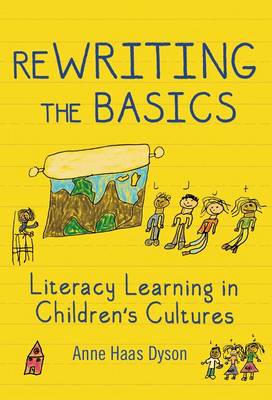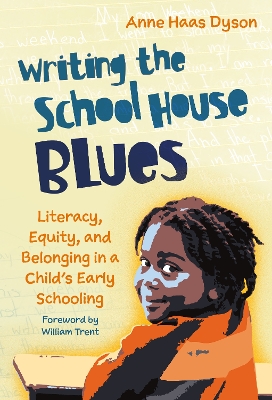Language & Literacy
3 total works
Readers will have a front-row seat in Mrs. Bee's kindergarten and Mrs. Kay's 1st-grade class, where these dedicated teachers taught writing basics in schools serving predominately low-income children of colour. The children, it turns out, had their own expectations for one another's actions during writing time. Driven by desires for companionship and meaning, they used available linguistic and multimodal resources to construct their shared lives. In so doing, they stretch, enrich, and ultimately transform our own understandings of the basics.
ReWRITING the Basics goes beyond critiquing traditional writing basics to place them in the linguistic diversity and multimodal texts of children's everyday worlds. This engaging work: illustrates how scripted, uniform curricula can reduce the resources of so-called ""at-risk"" children, provides insight into how children may situate writing within the relational ethics and social structures of childhood cultures, offers guiding principles for creating a programme that will expand children's possibilities in ways that are compatible with human sociability, includes examples of children's writing, reflections on research methods, and demographic tables.
Social Worlds of Children Learning to Write in an Urban Primary School
by Anne Haas Dyson
Dyson supports efforts to make literacy curricula accessible to our schools' socioculturally diverse population. This two-year ethnographic study of K-3 children focuses on six students who would normally be deemed "at-risk" and who do not tell stories in the written language format valued by most early literacy educators. Their literacy learning, particularly their writing development, is portrayed as a social process in a complex social world. Dyson's key theme is the link between composing a text and composing a place in this social world.
Book Features:
- A fresh approach to issues of inclusion, equity, and learning opportunities as seen through a child's eye.
- Narrative vignettes that bring to life the equity issues of everyday school experiences.
- An overview of the kinds of challenges to inclusion that may be faced by minoritized children in majority-dominated schools.
- Details about changing institutional literacy policies and practices over time and grade level, emphasizing their impact on relationships and learning.
- Examples of teachers and children enacting inclusive communities.


